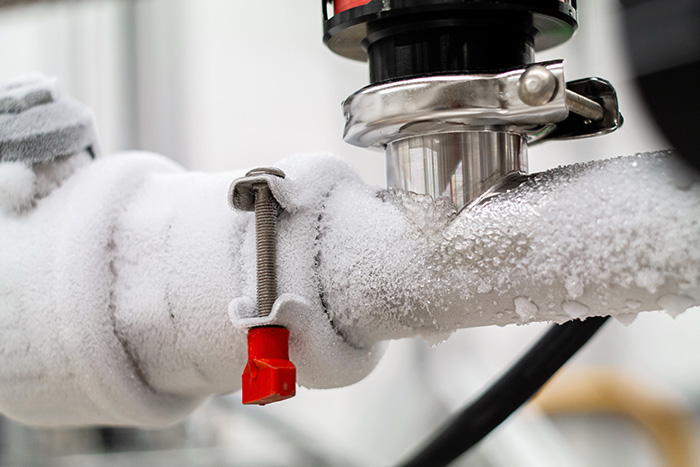Advice for Preventing Frozen Plumbing in Winter: Expert Insights
Advice for Preventing Frozen Plumbing in Winter: Expert Insights
Blog Article
What're your thoughts on 6 Ways to Prevent Frozen Pipes?

Cold weather can damage your plumbing, especially by freezing pipes. Here's how to prevent it from occurring and what to do if it does.
Introduction
As temperatures decline, the threat of frozen pipes boosts, potentially bring about pricey repair services and water damage. Recognizing just how to avoid frozen pipelines is important for property owners in cool climates.
Understanding Icy Pipelines
What triggers pipelines to ice up?
Pipes ice up when exposed to temperature levels below 32 ° F (0 ° C) for prolonged durations. As water inside the pipes ices up, it expands, putting pressure on the pipeline walls and possibly causing them to break.
Threats and damages
Icy pipelines can lead to water system disturbances, residential or commercial property damages, and pricey repair work. Ruptured pipelines can flood homes and trigger comprehensive structural damages.
Indicators of Frozen Pipes
Recognizing icy pipelines early can stop them from bursting.
How to identify icy pipelines
Seek lowered water circulation from taps, uncommon odors or sounds from pipelines, and noticeable frost on subjected pipes.
Prevention Tips
Protecting susceptible pipes
Wrap pipelines in insulation sleeves or utilize warm tape to secure them from freezing temperatures. Focus on pipelines in unheated or outside areas of the home.
Home heating methods
Keep indoor areas appropriately heated up, especially areas with pipes. Open closet doors to enable cozy air to distribute around pipelines under sinks.
Shielding Outside Pipes
Garden tubes and outside taps
Separate and drain yard tubes before winter months. Install frost-proof spigots or cover outside taps with insulated caps.
What to Do If Your Pipelines Freeze
Immediate activities to take
If you think icy pipelines, maintain faucets open up to alleviate stress as the ice thaws. Use a hairdryer or towels soaked in hot water to thaw pipelines gradually.
Long-Term Solutions
Structural adjustments
Think about rerouting pipelines away from exterior walls or unheated areas. Add additional insulation to attic rooms, basements, and crawl spaces.
Upgrading insulation
Invest in premium insulation for pipes, attics, and wall surfaces. Correct insulation aids keep regular temperature levels and lowers the threat of icy pipelines.
Final thought
Stopping frozen pipes calls for proactive actions and fast actions. By comprehending the causes, indicators, and preventive measures, property owners can protect their pipes during winter.
6 Proven Ways to Prevent Frozen Pipes and Protect Your Home
Disconnect and Drain Garden Hoses
Before winter arrives, start by disconnecting your garden hoses and draining any remaining water. Close the shut-off valves that supply outdoor hose bibs and leave the outdoor faucet open to allow any residual water to drain. For extra protection, consider using faucet covers throughout the colder months. It’s also important to drain water from any sprinkler supply lines following the manufacturer’s directions.
Insulate Exposed Pipes
Insulating your pipes is an effective way to prevent freezing. Pipe insulation is readily available at home improvement stores and is relatively inexpensive. Pay close attention to pipes in unheated areas such as the attic, basement, crawl spaces, or garage. Apply foam insulation generously to create a buffer against the cold. You can also wrap your pipes in heat tape or thermostat-controlled heat cables for added warmth.
Seal Air Leaks
Inspect your home for any cracks or openings that could let in cold air. Seal any holes around the piping in interior or exterior walls, as well as the sill plates where your home rests on its foundation. Additionally, make sure to keep your garage door closed unless you’re entering or exiting. Leaving it open creates a significant air leak that can lead to frozen pipes.
Allow Warm Air Circulation
During cold snaps, it’s essential to allow warm air to circulate evenly throughout your home. Leave interior doors ajar to promote better airflow. Open kitchen and bathroom cabinets to help distribute heat consistently around the rooms. If you have small children or pets, be sure to remove any household chemicals or potentially harmful cleaners from open cabinets for safety.
Let Faucets Drip
A small trickle of water can make a big difference in preventing ice formation inside your pipes. When temperatures drop significantly, start a drip of water from all faucets served by exposed pipes. This continuous flow helps prevent the water from freezing. Additionally, running a few faucets slightly can relieve pressure inside the pipes, reducing the chances of a rupture if the water inside does freeze.
https://choateshvac.com/6-proven-ways-to-prevent-frozen-pipes-and-protect-your-home/

I was made aware of that report about Preventing and dealing with frozen pipes from an acquaintance on a different web page. Loved our blog entry? Please quickly share it. Help someone else locate it. Thank you for being here. Kindly visit our site back soon.
Book Your Appointment Report this page